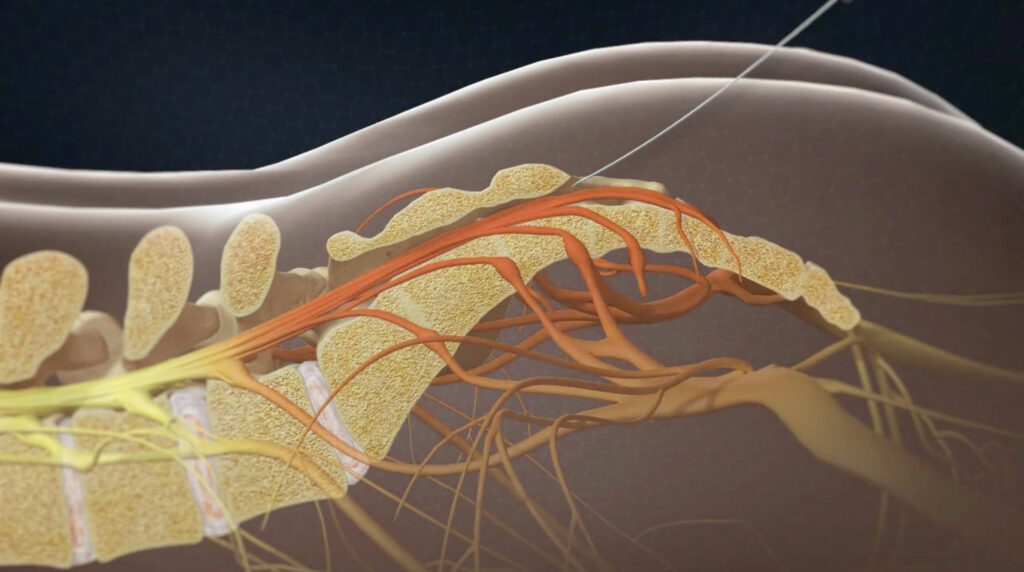Articles by Laxmaiah Manchikanti, MD
and Mahendra Sanapati, MD

What are Epidural Injections?
An epidural injection delivers medication into the epidural space around the spinal nerve roots to relieve pain caused by irritated spinal nerves. These injections generally include local anesthetics and steroids and occasionally other substances to reduce the inflammation of the nerves.

A caudal epidural injection is performed by entering through the small opening above the tailbone called the sacral hiatus. This approach is best in patients after having low back surgery.
With an interlaminar approach to epidural injection, the needle is placed in the center of the spine between 2 vertebral bodies and the epidural space is entered under fluoroscopic visualization. However, in the low back, there are 2 other types of epidural injections. A caudal epidural injection is performed by entering through the small opening above the tailbone called the sacral hiatus. This approach is best in patients after having low back surgery. Another mode of treatment is called a transforaminal epidural injection. With this approach, the needle is placed close to the origin of the nerve root.
All epidural injections may be associated with very small risk. Steroids also may have problems related to weight gain, loss of bone density, immunosuppression, flushing, and an increase in blood sugar.
Epidural injections may be helpful initially for 3 to 6 weeks, and after the third injection, approximately for 3 months or longer each time if patients are selected and an appropriate response is obtained.
